 Ronald Aug . March 20
Ronald Aug . March 20
Merchandise And Creator Brands
Creator Brand and Merchandise Case Studies
Challenges Faced and Lessons Learned by Creators
Struggling with Brand Identity
Many creators have experienced difficulty in establishing and maintaining a clear, recognizable brand for their channels. This includes determining a channel's niche, target audience, and visual identity.
Lessons Learned:
- Take the time to thoroughly research and understand the market you are entering, and how it relates to your channel's niche and target audience.
- Consistency is key - make sure your channel's name, logo, and color scheme reflect your brand's identity across all platforms.
- Regularly reassess your brand and its direction and make necessary adjustments to stay relevant and competitive in the fast-moving world of YouTube.
Challenges in Merchandise Design and Production
Creators have faced various challenges when it comes to designing, producing, and selling their merchandise, including:
- Lack of experience in design and production
- Deciding which products to offer
- Choosing the right price for their merchandise
Lessons Learned:
- Collaborate with experienced professionals and (if possible) fellow creators to navigate design and production processes.
- Research and study the merchandise strategies of successful creators to get inspiration and insights on what works best for your brand.
- Regular testing and adjustments in product lineup and pricing can lead to better sales and overall success for creator merchandise.
Balancing Creativity and Business
Many creators find it challenging to balance the creative aspects of their channel with the business side of things, such as managing merchandise sales, finances, and contracts.
Lessons Learned:
- Set achievable goals that align with your channel's mission and regularly track the progress.
- Seek advice and mentorship from other successful creators, especially when it comes to negotiating with brands and understanding sponsorship contracts.
- Consider hiring professional help or joining forces with fellow creators to manage various aspects of your channel's business, allowing you to focus on content creation.
Making a Profit
Not all creators can achieve financial success solely through ad revenue and merchandise sales. Sometimes, a diversified approach is necessary.
Lessons Learned:
- Explore alternative revenue streams, such as affiliate marketing, Patreon and channel memberships, and collaborations.
- Continuously reassess and evolve your monetization strategies; what works now might not work in the future.
- Seek out opportunities to improve your skills in video optimization and viewer retention as these elements directly correlate with financial success on the platform.
Dealing with Burnout and Negative Feedback
YouTube creators can suffer from burnout and face relentless negative feedback from their audience, which can adversely impact their mental health.
Lessons Learned:
- Establish a healthy work-life balance and take time off when needed to rejuvenate and prevent creator burnout.
- Engage with your audience and focus on the positive feedback and support you receive, rather than focusing solely on negative comments.
- Seek mentorship from other creators and consider finding a support network to discuss and manage creator-related stress and mental health issues.
By analyzing the challenges faced and lessons learned by various creators, you can adapt and refine your own strategies to build a successful creator brand and merchandise business on YouTube.
Creator Brand and Merchandise Case Studies
Innovative Merchandise Trends and Experimentation
Merchandise that complements the channel's content
Well-curated merchandise can showcase how creators are in touch with their audience and understand their needs. Take for instance cooking channels like Binging with Babish and Rosanna Pansino, who sell custom aprons, cooking utensils, and recipe books, all tied to their channels' themes.
Limited-edition items for die-hard fans
Collaborations between creators
Environmentally friendly and sustainable merchandise
Eco-friendly merchandise can resonate with viewers who care about their environmental impact. The Try Guys, a comedy and entertainment channel, has incorporated sustainable clothing and packaging in their merch line to reinforce their commitment to being a responsible brand.
Customizable items for a personal touch
Allowing fans to customize items can add a sense of personal connection to the merchandise. YouTuber Lilly Singh, known as Superwoman, has a "custom name hoodie" where fans can add their name on the garment, giving them a unique connection to the creator and her brand.
Do's:
- Align your merchandise with your channel's theme and content
- Collaborate with other creators for unique offerings
- Prioritize quality and memorable designs
- Continuously experiment with new items to keep audiences engaged
- Use analytics and audience feedback to optimize merchandise offerings
Don'ts:
- Don't sell products that seem unrelated to your channel or brand
- Don't rely solely on generic products (e.g., plain t-shirts with minimal design)
- Don't alienate viewers with overly high prices or poor quality materials
- Don't ignore copyright laws — always ensure that your designs are original and adhere to copyright laws
Successful Creator Brands and Their Strategies
In this section, we will discuss several successful creator brands and the strategies they've employed to build their brand and sell merchandise. We will cover various aspects, such as their branding, content, merchandise, and marketing tactics.
PewDiePie
PewDiePie is a renowned YouTuber with over 110 million subscribers. His unique and well-established brand is a key factor in his success in selling merchandise.
- Branding: PewDiePie has a recognizable and distinct brand identity with his logo, color schemes, and style. This consistency helps create a sense of trust and reliability with his audience.
- Content: PewDiePie's content revolves around gaming, meme culture, and comedic commentary. His content is not overtly promotional of his merchandise but incorporates it organically.
- Merchandise: PewDiePie offers a range of merchandise, such as clothing, accessories, and limited edition items. The designs are trendy and appeal to his target audience.
- Marketing: PewDiePie leverages his social media presence and YouTube channel to promote his merchandise, using teasers, exclusive previews, and discount codes to generate buzz.
LinusTechTips
LinusTechTips is a popular technology-centered YouTube channel with over 14 million subscribers. They have successfully built a profitable brand and sell various merchandise to their audience.
- Branding: LinusTechTips' brand identity is centered on technology, information, and entertainment. Their branding is consistent across their content, products, and online presence.
- Content: LinusTechTips creates content that is informative, engaging, and entertaining. Their content incorporates their products and services in a way that feels genuine and organic.
- Merchandise: LinusTechTips offers a variety of merchandise, such as clothing, accessories, and computer hardware components. The products cater to the interests of their technology-savvy audience.
- Marketing: LinusTechTips promotes their merchandise on their YouTube channel and social media platforms. They also use targeted marketing campaigns, collaborations with other content creators, and give away contests to increase visibility.
Dude Perfect
Dude Perfect is a YouTube channel that creates sports entertainment content and has a strong following of over 56 million subscribers.
- Branding: Dude Perfect's branding is focused on sports, fun, and family-friendly content. Their logo, color schemes, and branding are consistent and easily recognizable.
- Content: Dude Perfect's content comprises sports trick shots, challenges, and competitions. They often feature their merchandise in their videos, creating a connection between their content and products.
- Merchandise: Dude Perfect sells a range of merchandise, including apparel, accessories, and gadgets related to their content. The products cater to their sports-loving audience.
- Marketing: Dude Perfect promotes their merchandise through their YouTube channel, social media platforms, sponsorships, and collaborations with other content creators.
Do's
- Create a consistent and appealing brand identity.
- Integrate your merchandise organically into your content.
- Offer unique and high-quality products that cater to your audience's interests.
- Use various marketing tactics, such as social media promotions, collaborations, and teasers, to create buzz around your merchandise.
Don'ts
- Don't force your merchandise into your audience’s view. Allow them to discover it through your content, making it more authentic.
- Don't create generic, low-quality products. Ensure your merchandise reflects your brand and meets your audience’s expectations.
- Don't rely solely on your YouTube channel to promote your merchandise. Utilize other platforms and marketing tactics to expand your reach.
To further improve your YouTube content creation, consider checking out online resources such as courses and educational materials on how to make YouTube videos.
Overall, a successful creator brand combines consistent branding, engaging content, high-quality merchandise, and effective marketing strategies. By analyzing and learning from the successes of these creators, aspiring YouTubers can develop their brand and merchandise offering, ultimately leading to a more profitable and sustainable channel.
Developing Your Own YouTube Merchandise and Creator Brand
- Designing Your Brand Identity
- SEO Link and Keyword
- Pricing and Profit Margin Strategies
- Sourcing and Production Considerations
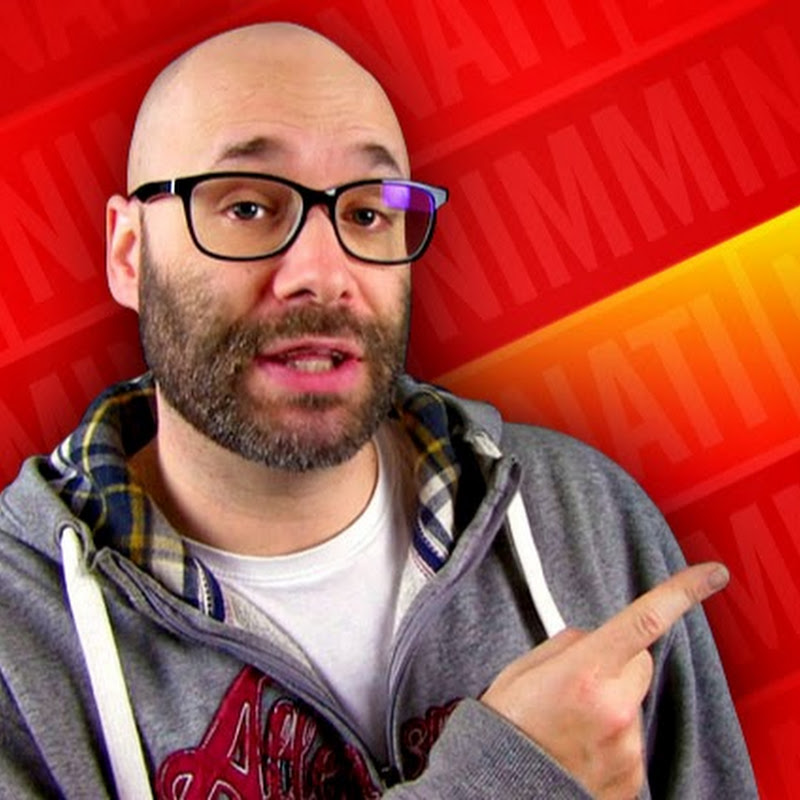
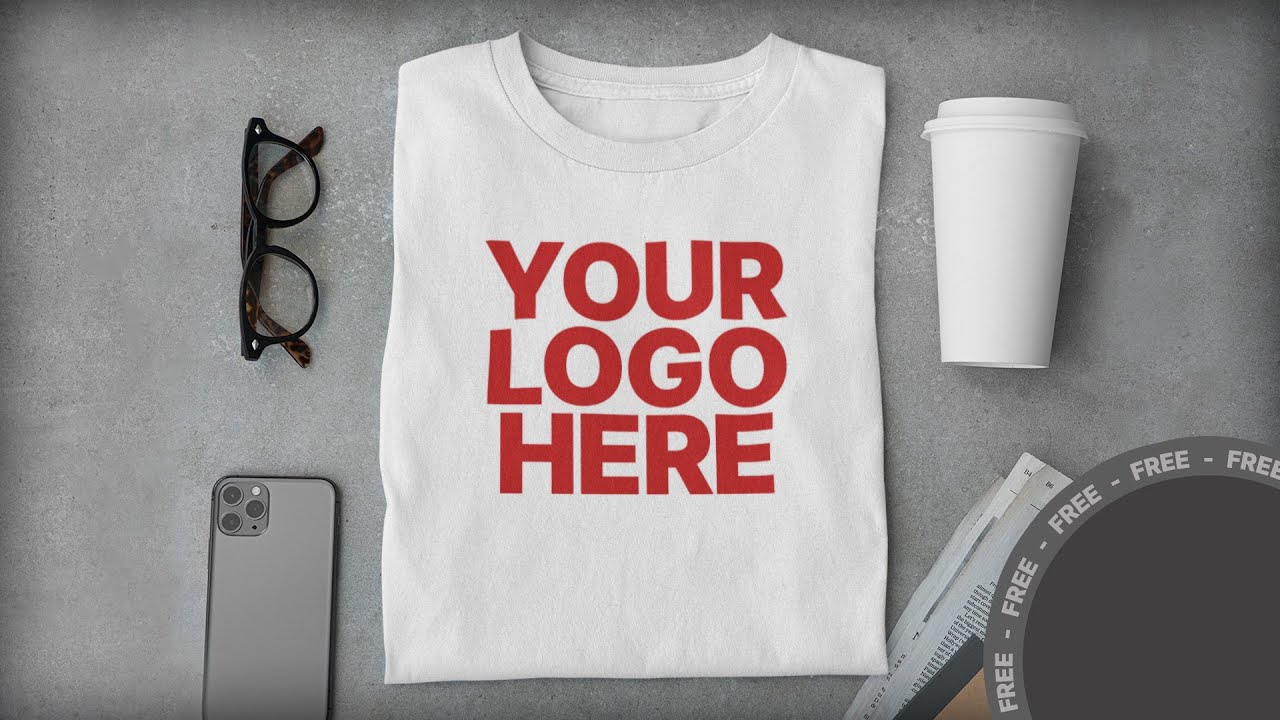 Nick Nimmin
Nick Nimmin
Developing Your Own YouTube Merchandise and Creator Brand
Designing Your Brand Identity
Designing a brand identity for your YouTube merchandise and creator brand involves several key elements, such as a unique logo, consistent color palette, and a clear message.
Statistics on the Importance of Branding for YouTube Creators
- 60% of YouTube subscribers prefer to buy products from familiar YouTube creators (source
- 72% of teenagers consider YouTube creators to be more influential than traditional celebrities (source
Elements of a Strong Brand Identity
1. Logo
Your logo should be memorable, distinctive, and representative of your channel's content.
2. Color Palette
Choose a color palette that complements your logo and represents your brand. Consider how these colors will look on various merchandise items.
3. Typography
Select appropriate typography to convey your brand's message and personality. Ensure it is legible and recognizable on all merchandise items.
4. Messaging
Your brand's message should communicate its purpose and values. This may include your channel's tagline or catchphrase.
- PewDiePie - Known for his tagline "Brofist" and personalized illustrations, PewDiePie utilizes a vibrant color palette for his merchandise.
- Liza Koshy - Liza's bold typography and empowering messaging connect with her audience, creating a recognizable brand identity.
Do:
- Create a unique logo that represents your channel and content.
- Utilize a consistent color palette across all platforms.
- Select legible typography that conveys your brand's personality.
- Maintain a clear and consistent message.
Don't:
-
Copy other creators' logos or designs.
-
Use generic or clipart images for your logo.
-
Overdesign or use too many fonts and colors.
-
Neglect potential copyright issues.
Further Resources
Developing Your Own YouTube Merchandise and Creator Brand
Pricing and Profit Margin Strategies
Pricing your merchandise
-
The average markup for selling merchandise through e-commerce platforms is around 100-200% .
-
Around 28% of US consumers have purchased a YouTube influencer's merchandise in the past year .
-
YouTuber PewDiePie sells his merchandise with a retail price range of $25 to $60 for T-shirts, hats, and hoodies .
-
Dude Perfect, a popular YouTube sports entertainment group, offers merchandise priced from $15 to $60 for T-shirts, hats, accessories, and more .
-
DO research your competitors and target audience to determine the appropriate price range for your products
-
DO calculate your production costs, shipping and handling fees, and any other expenses to set a markup that covers these costs and ensures a healthy profit margin
-
DON'T overprice your merchandise, as it may discourage potential buyers and negatively impact your brand image
Profit Margin Strategies
-
Gross profit margin for the retail industry ranges between 20% and 49%, depending on factors such as competition, location, and product type .
-
According to a study of over 1,700 Shopify sales channels, the average profit margin is 29% .
-
YouTuber Markiplier has mentioned in a video that he aimed for a 40% profit margin on his merchandise, which allowed him to cover production costs and support his channel .
*Gross Profit Margin by Industry. Source: CSI Market *
- DO implement a profit margin strategy that balances profitability for your business and affordability for your customers
- DO continually optimize your operations to minimize costs and maximize profit margins (e.g., efficient inventory management, bulk discounts from suppliers, etc.)
- DON'T solely focus on maximizing profit at the expense of product quality and customer satisfaction
To help you further in your YouTube journey, check out this guide on websites for YouTube creators to stay informed and continually improve your channel.
Developing Your Own YouTube Merchandise and Creator Brand
Sourcing and Production Considerations
Creating merchandise and a strong creator brand is essential for any successful YouTuber. In this section, we explore various sourcing and production factors to consider when developing your merchandise. We will cover:
Choosing the right merchandise
Before diving into production, it's crucial to identify the types of products that would best resonate with your audience. Here are a few popular merchandise options for YouTubers:
- T-shirts and hoodies
- Caps and hats
- Posters and prints
- Phone cases
- Stickers and buttons
- Custom-designed products
Consider your target demographic, their interests, and what kind of merchandise would best represent your channel's brand.
Selecting a merchandising platform
Choosing the right platform for selling your merchandise is key to managing revenue and ensuring a smooth experience for your buyers. Popular platforms include:
These platforms handle production, shipping, and customer service, allowing you to focus on creating content for YouTube. Research each option and find the platform that best suits your needs.
Quality and ethical considerations
High-quality merchandise ensures customer satisfaction and positive brand perception. Consider the following factors when deciding on a production partner:
- Material quality
- Print quality and durability
- Eco-friendly and ethical production
Requesting product samples is one way to ensure that the final products meet your standards.
Inventory management
Choosing between print-on-demand and traditional inventory stocking options is crucial. Print-on-demand services, such as those provided by Teespring and Spreadshirt, are better suited for smaller creators without upfront capital. These services create products as orders are placed, avoiding any financial risk.
On the other hand, managing your inventory requires more capital upfront but can offer better profit margins for larger creators.
Pricing and profit margins
Striking a balance between affordability for fans and profitability for your business is vital. Consider the following when setting prices:
- Production costs
- Shipping costs
- Competitor pricing
- Your target audience's purchasing power
Promotion and launch strategies
Promoting your merchandise is essential for driving sales. Start by creating engaging content that highlights your products, such as unboxing videos, giveaways, and discount codes. Collaborating with other creators to promote each other's merchandise through YouTube collabs can also boost visibility.
Shipping and customer service
Shipping and customer service play a significant role in maintaining customer satisfaction. Ensure that your chosen platform provides a smooth shipping experience and excellent customer service.
When creating merchandise designs, pay attention to copyright laws, trademarks, and licensing agreements. Familiarize yourself with YouTube copyright strike rules and avoid using copyrighted material without permission.
Developing Your Own YouTube Merchandise and Creator Brand
Analyzing Your Audience Demographics
Examining your audience demographics provide valuable insights into their age, gender, location, and other attributes. You can use YouTube Analytics to gather this information. Consider the following statistics from YouTube:
- 77% of 15-35-year-olds in the U.S. use YouTube.
- 70% of YouTube watch time comes from mobile devices.
Identify Your Niche
To succeed in any business, including YouTube, it’s vital to identify your niche. Finding a unique and relevant niche will not only allow you to stand out in the market but also help you reach a specific target audience who shares your interests. Here are some strategies for identifying your niche:
- Evaluate your passions, hobbies, or areas of expertise
- Research market demand and competition within your niche
- Test your niche idea through polls or questionnaires within your community
Aligning Your Merchandise and Brand with Your Channel Theme
To maximize the impact of your merchandise and creator brand, ensure they align with your channel theme. Consider the following questions:
- What is the tone, aesthetic, and color scheme of your channel?
- What types of materials or products align with your channel's theme?
- How can your merchandise stand out and represent your channel in a unique way?
Collaborating with Other YouTubers or Influencers
Collaborations with other YouTubers or influencers within your niche can significantly expand your merchandise reach. By working together, you and your collaborator can tap into each other’s audiences and cross-promote your products. You can discover potential collaborators by attending industry events, reaching out online, or participating in relevant forums and communities.
Do's:
- Offer high-quality and unique products
- Market your merchandise and brand through impactful storytelling
- Use sustainable and ethical practices as part of your merchandise development strategy
Don'ts:
- Overprice your products and undersell your value proposition
- Forget about shipping logistics, customer service, and return policies
- Rely solely on YouTube merch shelf for promotion; utilize all social media platforms and marketing opportunities
By understanding your audience and niche, you can create a successful merchandise line and distinct creator brand that resonates with your viewers. Keep up with the latest information for YouTube creators by visiting the best channels, websites, and newsletters for YouTube creator news.
Future of YouTube Merchandise and Creator Brands
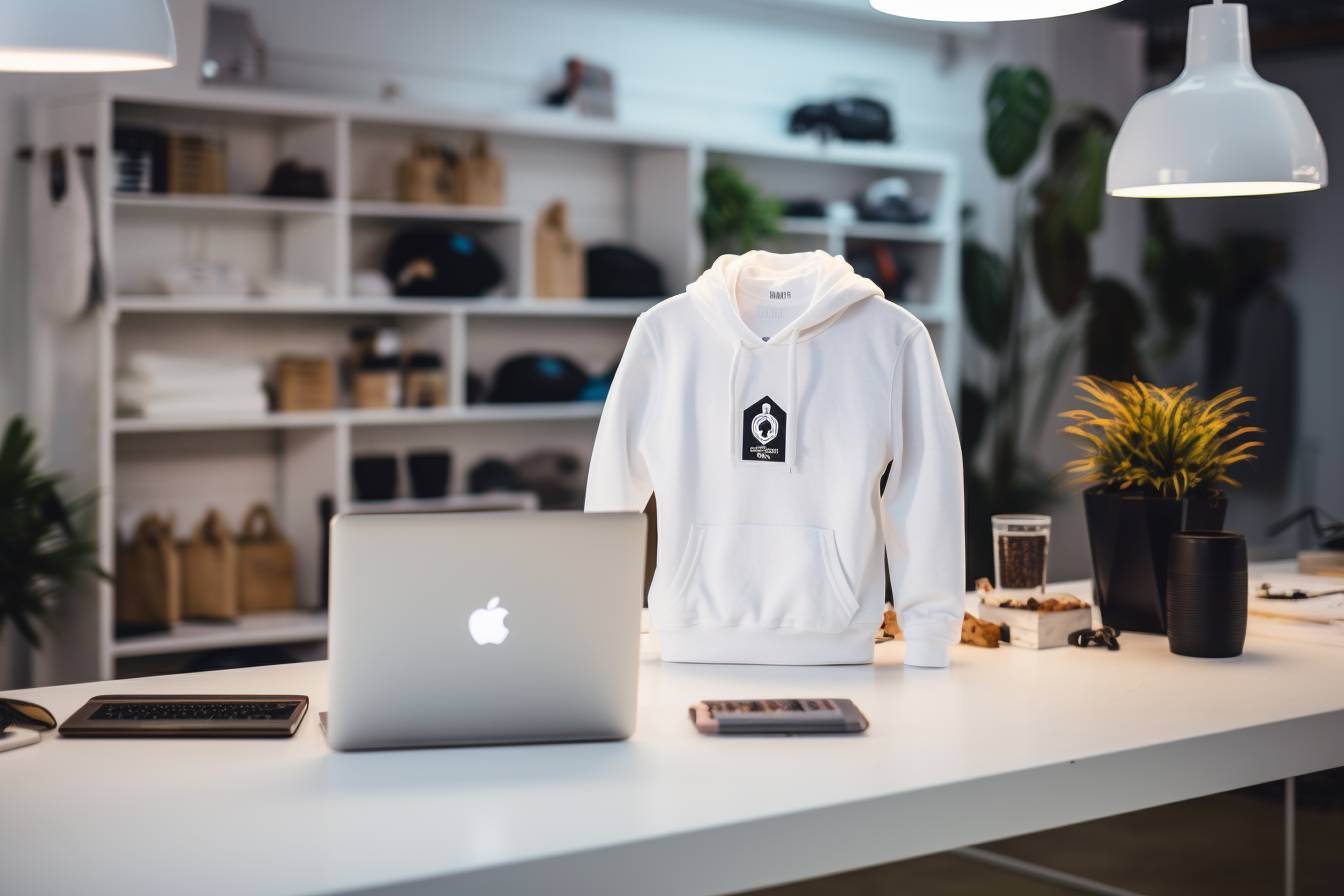
Future of YouTube Merchandise and Creator Brands
Emerging Trends and Opportunities
Rise of Personal and Unique Creator Brands
As the number of YouTube creators grows, there is an increasing need for creators to differentiate their brand through unique merchandise offerings. This is leading to a trend of creators launching clothing lines, accessories, and collectible items that are directly tied to their channel's brand.
- PewDiePie's exclusive clothing line with TSUKI Market
- David Dobrik's "Clickbait" branded apparel
- Safiya Nygaard's lipstick collaboration with ColourPop
Pop-up Stores and Limited Edition Drops
To create a sense of exclusivity and urgency, many YouTube creators are starting to embrace the pop-up store concept and limited edition merchandise drops. These special, one-time events can draw large crowds and significantly boost sales.
- Shane Dawson's Conspiracy Collection merchandise pop-up store
- Gabbie Hanna's limited edition poetry book and merchandise drop
Collaboration with Major Retailers and Brands
Increasingly, YouTube creators are turning to collaborations with major retailers and established brands to expand their reach, tap into new markets, and gain additional credibility. These partnerships can also be mutually beneficial, as the retailers and brands can also attract the creator's audience.
- Emma Chamberlain's coffee collaboration with Chamberlain Coffee
- James Charles's makeup collaboration with Morphe
Embracing Sustainable and Environmentally-Friendly Merchandise
As consumers become more aware of sustainability issues, YouTube creators who adopt environmentally-friendly merchandise practices, such as using recycled materials and reducing packaging waste, are gaining a competitive edge and capturing the growing eco-conscious market segment.
Do's:
- Use sustainable and eco-friendly materials in the production of merchandise
- Limit packaging waste and use recycled materials
- Partner with eco-conscious producers and suppliers
Don'ts:
- Overproduce and contribute to waste
- Use materials that have negative environmental impacts
- Ignore the growing market demand for sustainable products
Utilizing Data-Driven Design and Sales Strategies
- Analyzing sales data to determine popular products and trends, and adjusting product offerings accordingly
- Tracking the success of marketing campaigns in driving sales, and optimizing campaigns based on this data
Tapping into New Merchandise Opportunities
Finally, YouTube creators should always be on the lookout for new and innovative ways to monetize their content and engage with their audience. This can include venturing into non-traditional merchandise opportunities, such as virtual or augmented reality products, subscription boxes, or branded events.
- Pokimane's limited edition virtual reality merchandise
- Jenna Marbles' subscription box that includes new, exclusive merchandise every month (find sponsors to help offset production costs for such offerings)
Overall, the future of YouTube merchandise and creator brands is full of opportunities for growth and innovation. By staying ahead of the trends and embracing new strategies, creators can maximize their merchandising potential and provide their audiences with exciting products that reflect their unique brand.
New Technologies and Innovations in Merchandising
The popularity of YouTube merchandise has offered creators unprecedented opportunities to monetize their content. The future of YouTube merchandising is bound to be impacted by new technologies and innovations that make it even easier for creators to create and sell a wide range of products. This section discusses these technologies, their applications, and how they can lead to new opportunities for YouTube merchandising.
Augmented Reality (AR) and Virtual Reality (VR)
With the rise of AR and VR technologies, there are now more ways than ever for creators to engage their audience through immersive experiences like virtual showrooms and interactive product displays. These technologies can help creators showcase their merchandise in novel ways and facilitate virtual try-ons, providing users with a more personalized shopping experience.
Do's:
- Use AR and VR technologies to create a more interactive and immersive experience for your fans
- Consider partnering with AR and VR developers to create unique and customized experiences
Don'ts:
- Neglect to keep your audience engaged with your AR and VR content
- Overload your AR and VR experiences with too many products, making it difficult for users to navigate
Artificial Intelligence (AI)
Do's:
- Use AI-driven design tools to optimize your designs and improve their appeal to your audience
Don'ts:
- Rely solely on AI for your merchandise designs, as a human touch may still be necessary
- Violate privacy regulations by using AI to analyze users' data without their consent
D Printing and Customization
Do's:
- Offer fans customizable merchandise using 3D printing technology
- Experiment with different materials and designs to provide a larger variety of products
Don'ts:
- Overprice your 3D printed products, as fans may not be willing to pay a premium for customization
- Neglect the quality control of your 3D printed merchandise, as low-quality products may damage your brand reputation
Eco-Friendly and Sustainable Merchandise
As sustainability becomes a priority for many consumers, offering eco-friendly and sustainable merchandise can help creators appeal to environmentally conscious fans. Creators can use organic materials, environmentally-friendly production methods, and sustainable packaging to reduce the environmental impact of their merchandise.
Do's:
- Source your merchandise from ethical and environmentally responsible suppliers
- Communicate the eco-friendliness of your products to your audience
Don'ts:
- Greenwash your merchandise, as it may damage your reputation if discovered
- Sacrifice the quality of your merchandise for the sake of being eco-friendly
Digital Merchandise and NFTs
Digital merchandise and non-fungible tokens (NFTs) represent a new frontier in merchandising, providing creators with a way to offer unique and limited edition digital assets to their fans. These assets can include digital art, video clips, and other digital collectibles that fans can purchase, trade, and showcase.
Do's:
- Experiment with digital merchandise and NFTs as a way to appeal to a new audience and monetize your digital content
- Ensure that digital merchandise and NFTs align with your brand and cater to your audience's interests
Don'ts:
- Overhype your NFTs without offering real value to your fans
- Ignore the environmental impact of NFTs, as fans may be concerned about their carbon footprint
To explore more about how to create YouTube videos and engage with your audience, check out How to make YouTube videos for additional resources. This will provide you with valuable information on creating high-quality content that your audience will enjoy and improve your overall YouTube merchandising strategy.
Future of YouTube Merchandise and Creator Brands
Sustainability and Ethical Considerations
The Importance of Sustainability and Ethics in YouTube Merchandise
As global environmental and social challenges continue to grow, consumers are progressively looking for brands and creators who not only deliver quality products, but also those who contribute positively to the world and demonstrate a commitment to sustainability and ethical practices. A 2020 study revealed that 71% of consumers prefer buying from companies that align with their personal values and beliefs.
For YouTube creators, adopting and promoting sustainable and ethical practices can not only help protect the environment and uphold human rights, but also strengthen their brand image, build trust with their audience, and ultimately, increase sales and revenue.
| Creator | Product / Practice | Description |
|---|---|---|
| Emma Chamberlain | Emma Chamberlain's Coffee | The popular YouTuber uses responsibly sourced coffee beans packaged in compostable bags, ensuring that her product has a minimal impact on the environment. |
| Sustainably Vegan | Sustainably Vegan eBook | The creator offers an eBook with tips for living a zero-waste, eco-friendly lifestyle, sharing her knowledge and passion for sustainability with her audience. |
| Lauren Singer | Package Free Shop | The zero-waste advocate runs an online store selling sustainable essentials that encourage waste reduction and minimization. |
Best Practices for Sustainable and Ethical YouTube Merchandise
-
Choose sustainable materials and production methods: Use materials with lower environmental impacts, such as recycled fabrics for clothing or biodegradable packaging materials. Likewise, partner with manufacturers that utilize energy-efficient production processes and meet environmental certifications.
-
Support fair labor practices: Collaborate with suppliers and manufacturers that adhere to ethical labor laws, pay fair wages, and ensure safe working conditions for employees.
-
Promote transparency and traceability: Be open about the origins of your merchandise, sharing information about the materials, supply chain, and production processes. This can build trust with your audience and show that you are committed to ethical practices.
-
Consider local sourcing and production: Sourcing and producing items locally can significantly reduce the environmental impact and carbon footprint of your merchandise.
-
Educate your audience: Use your platform to share insights and tips on sustainable living, showcasing your commitment to these issues and inspiring others to make responsible choices.
Challenges and Opportunities for Creators
Despite the potential benefits, adopting sustainable and ethical practices can be challenging for creators, especially for smaller channels with limited resources and bargaining power. These challenges can include:
- Higher costs for sustainable materials and ethical production processes
- Limited availability of materials and suppliers that meet sustainability and ethical requirements
- Balancing the need for affordability and availability with a commitment to sustainability and ethics
However, these challenges also present opportunities for creators to innovate, collaborate, and contribute to a more sustainable and ethical future. As society shifts toward greater awareness and demand for sustainable products, creators are well-positioned to make a positive impact and reap the rewards of building a responsible brand.
Some channels even focus on educating creators on how to make YouTube videos in a more sustainable and ethical manner.
It’s time for YouTube creators to embrace sustainability and ethical considerations in their merchandise and creator brands, as it benefits not only the environment and society, but also the creators themselves.
Marketing and Promoting Your Merchandise and Creator Brand
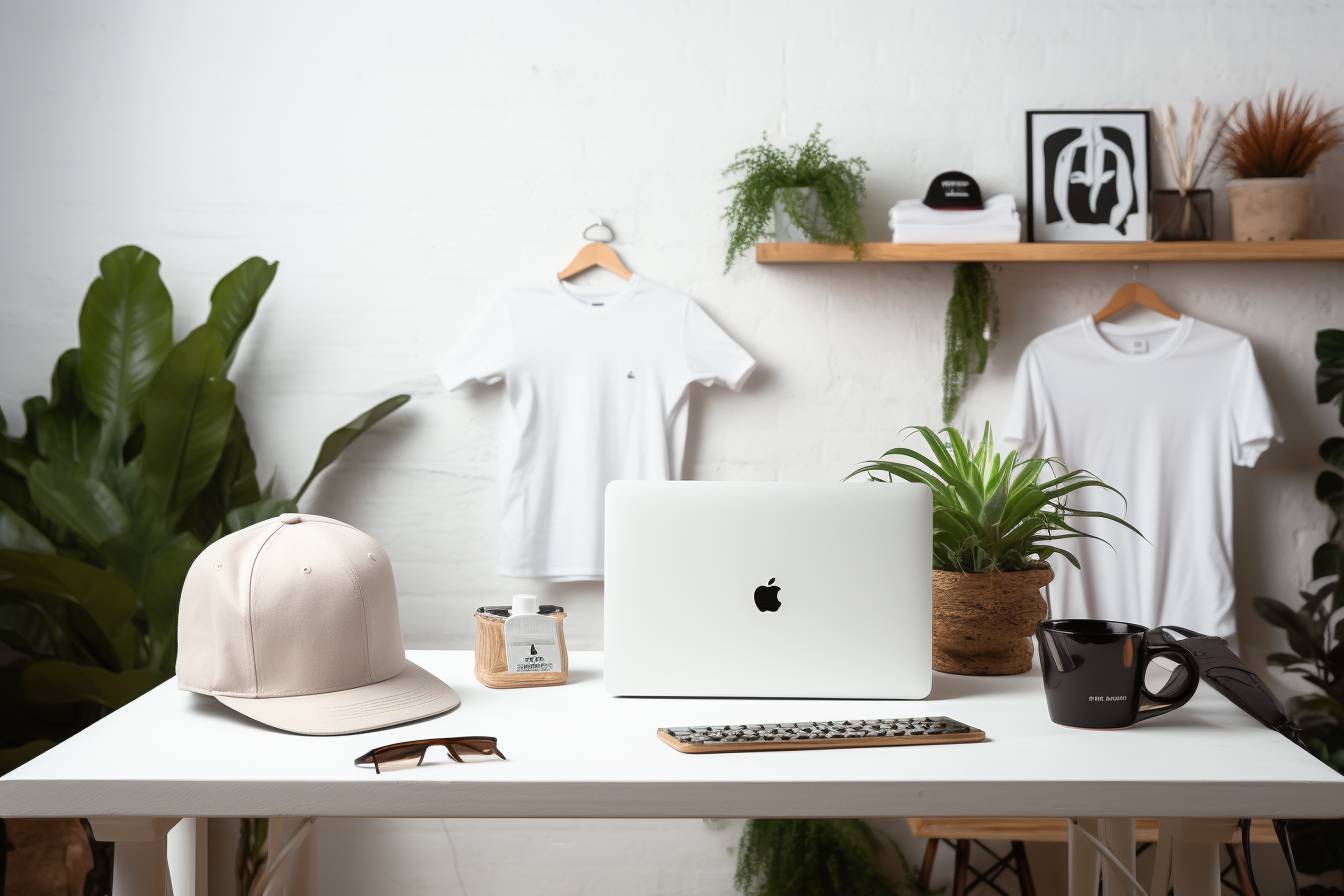
Best Practices for Showcasing Merchandise in Videos
Effective promotion of your merchandise and creator brand plays a crucial role in boosting your YouTube channel's growth. This section explores the best practices for showcasing merchandise in videos to enhance viewer engagement and increase sales.
Integrate Merchandise Organically
Display your merchandise seamlessly within your video content. Avoid resorting to hard-selling tactics and let your merchandise feature purpoeefuly as a cohesive element in your videos.
- Wear your own merchandise throughout the video.
- Use and review your products in a relevant context.
- Showcase your merchandise as props or set decorations.
Using professional-looking images and visuals helps capture viewer attention. Ensure that your merchandise is displayed with clear, well-lit, and visually appealing graphics.
Collaborate with Other Creators
Partner with other Creators and showcase each other's merchandise in videos. This mutual promotion helps reach new audiences and strengthens both creator brands. Look for YouTube collabs with creators within your niche or audience demographic.
Utilize Annotations and Cards
Maximize YouTube features like annotations, end screens, and cards to direct viewers to your merch store. Be sure to link to your store or a specific item in a non-intrusive manner during relevant moments.
Offer Exclusive Merchandise Deals and Promotions
Reward your loyal audience with exclusive deals and promotions. Use limited-time discounts or freebies to encourage sales and create a sense of urgency.
For a limited time, use code YT20 to get 20% off your purchase at our store!
Measure the Impact of Your Promotions
Monitor and analyze viewer engagement, click-through rates, and sales to determine the effectiveness of your promotional strategies. Adjust and tailor your approach to best resonate with your audience.
Metrics to track:
| Metric | Goal |
|---|---|
| Video Views | Increased views during promotion |
| Click-Through Rate (CTR) | Higher percentage of clicks |
| Sales Conversion Rate | Greater percentage of sales conversions |
Do's
- Consistently showcase your merchandise across various video formats.
- Use visually appealing designs that resonate with your brand.
- Provide clear calls to action for viewers to purchase your merchandise.
- Create a sense of FOMO by offering limited editions or limited-time offers.
Don'ts
- Don't pressure your audience with aggressive sales tactics.
- Don't compromise your video content quality to promote merchandise.
- Don't exclusively focus on your merchandise, ignoring other engagement opportunities.
- Don't rely solely on merchandise promotion for your channel's growth and success.
Incorporating these best practices into your YouTube strategy will lead to more significant results in promoting your merchandise and creator brand. By doing so, you can experience boosted engagement, expanded audience reach, and heightened revenue opportunities. Be sure to check out other resources on how to make YouTube videos and strategies for growing your YouTube channel.
Marketing and Promoting Your Merchandise and Creator Brand
Building Hype and Launch Strategies
In this section, we will explore various strategies to hype up your merchandise launch and increase its chances of success. By leveraging your Creator Brand and YouTube audience, you can make your merchandise a hit while fortifying your online presence.
- A study by Oberlo showed that 90% of users discover new brands or products on YouTube, making it a great platform to market and promote your merchandise.
- PewDiePie, one of the most successful YouTubers, has managed to sell millions of dollars' worth of merchandise through effective marketing and launch strategies.
Build Anticipation
-
Sneak peeks: Share teaser images, behind-the-scenes footage, or descriptions of your upcoming merchandise on social media and YouTube community posts to spark curiosity.
-
Countdowns: Announce the release date and create a countdown for your merchandise launch to increase excitement.
-
Influence and collaborations: Partner with other YouTubers for collaborations and have them wear or promote your merchandise.
-
Exclusive offers: Provide limited-time discounts or exclusive items for early buyers to encourage them to purchase as soon as the merchandise is launched.
Engage Your Audience
-
User-generated content: Encourage your audience to share images or videos of themselves wearing or using your merchandise, and reward them with shoutouts or giveaways.
-
Merchandise giveaways: Host giveaways on your YouTube channel or social media to boost engagement, while providing an opportunity for potential customers to sample your merchandise.
Launch Strategies
-
Timed exclusivity: Launch limited edition or exclusive merchandise for a restricted time frame to create urgency and persuade customers to buy immediately.
-
Collaborative releases: Release your merchandise in collaboration with popular events, holidays, or other influencers to amplify the promotional impact.
-
Staggered releases: Introduce different products in your merchandise line over time to keep your audience engaged and looking forward to new releases.
-
Cross-platform promotion: Use your YouTube channel, social media profiles best tools for youtube creators, and email lists to maximize visibility and make your launch a success.
-
YouTube video: Create a dedicated YouTube video announcing your merchandise launch, showcasing your products, and sharing relevant details such as pricing, availability, and where to buy.
Do's
- Make sure your merchandise is relevant, high-quality, and aligns with your Creator Brand.
- Engage with your audience to get their feedback and foster a sense of community around your brand.
- Collaborate with other creators to cross-promote and expand your reach.
Don'ts
-
Don't ignore negative feedback. Instead, use it as an opportunity to improve your merchandise.
-
Don't oversaturate your videos and posts with too many promotions, as it may deter viewers.
-
Don't rely solely on YouTube to promote your merchandise. Utilize other social media platforms for maximum exposure.
Remember, the key to successfully marketing and promoting your merchandise and Creator Brand lies in engaging your audience, building anticipation, and implementing effective launch strategies. Monitor your progress and adjust your approach accordingly to make your merchandise business a hit.
Marketing and Promoting Your Merchandise and Creator Brand
Influencer Collaborations and Partnerships
Importance of Influencer Collaborations
Collaborations and partnerships can drive growth for both parties involved. They expose both creators to new audiences, who might not have discovered their content otherwise. Collaborations can also significantly increase watch time, views, and revenue, contributing to the long-term success of both YouTube channels. Some ways to find potential partners are through networking at events, joining online communities for YouTube creators, or searching hashtags on social media platforms.
- 70% of teenage YouTube subscribers say they relate to YouTubers more than traditional celebrities (source: Think with Google
- On average, businesses generate $5.20 for every $1 spent on influencer marketing (source: Influencer Marketing Hub
| YouTuber | Subscribers Before Collaboration | Subscribers After Collaboration | Subscriber Growth |
|---|---|---|---|
| Casey Neistat | 11,400,000 | 11,500,000 | +100,000 |
| Peter Mckinnon | 3,800,000 | 3,900,000 | +100,000 |
- Shane Dawson and Jeffree Star: Their document-series collaboration resulted in a massive surge of subscribers, views, and revenue for both creators. The series also helped promote Jeffree Star's makeup line, which sold out in hours.
Do's
- Choose a partner whose content complements your own, even if they have a smaller audience than you.
- Plan and discuss the collaboration thoroughly, and ensure both parties are clear about their responsibilities and expectations.
- Include a call-to-action at the end of the video to encourage viewers to subscribe to both channels.
Don'ts
- Collaborate with creators who have a controversial background or a negative reputation, as it might harm your brand.
- Pressure your partner to promote your merchandise without offering something valuable in return, such as promoting their products or offering a commission.
To further develop your YouTube skills, check out this article on the best tools for YouTube creators.
Marketing and Promoting Your Merchandise and Creator Brand
Utilizing Social Media and Other Online Platforms
Utilizing social media platforms and websites in tandem with your YouTube channel is essential for promoting your merchandise and growing your creator brand. Social media sites, particularly Facebook, Twitter, Instagram, and TikTok, are vital for reaching a broader audience and sharing your content, products, and services with potential fans.
| Social Media Platform | User Base (in millions) | Key Features for Promotion |
|---|---|---|
| 2,740 | Sharing videos, Creating Pages, Events, Ads | |
| 330 | Tweets, Retweets, Hashtags, Ads | |
| 1,120 | Posts, Stories, Reels, IGTV, Ads | |
| TikTok | 689 | Video content, Hashtags, Ads |
- Facebook: During a product launch, create a Facebook event, invite followers, and use Facebook ads to target potential customers.
- Twitter: Tweet about your latest video, use relevant hashtags, and tag other creators for collaborations or shoutouts.
- Instagram: Share behind-the-scenes content, create engaging stories featuring your products and link to your YouTube channel or online store.
- TikTok: Create short, entertaining videos that showcase your merchandise, feature trending music and use hashtags for greater visibility.
Do's:
- Use a consistent username and branding across platforms.
- Engage with your audience by responding to comments, messages, and mentions.
- Collaborate with other creators to increase your reach.
- Cross-promote your content on other channels and platforms.
- Monitor the performance of your promotions and analyze audience engagement.
- Utilize websites for YouTube creators to stay updated on industry news and trends.
Don'ts:
- Spam or overpromote your content.
- Ignore or engage in negative interactions with followers.
- Post the same content on every platform, as each has its unique format and user base.
- Neglect to update social profiles and keep them aligned with your YouTube channel's evolving brand.
The chart above illustrates the importance of engaging with your audience on different social media platforms, as well as the potential growth in followers, likes, and viewers attributed to effective promotion strategies.
By effectively utilizing social media and other online platforms, your merchandise and creator brand will experience significant growth and success. Remember to remain consistent in your branding efforts, stay up-to-date on industry trends, and continuously adapt your marketing strategies to maintain relevance and boost your online presence.
Types of YouTube Merchandise and Creator Brands
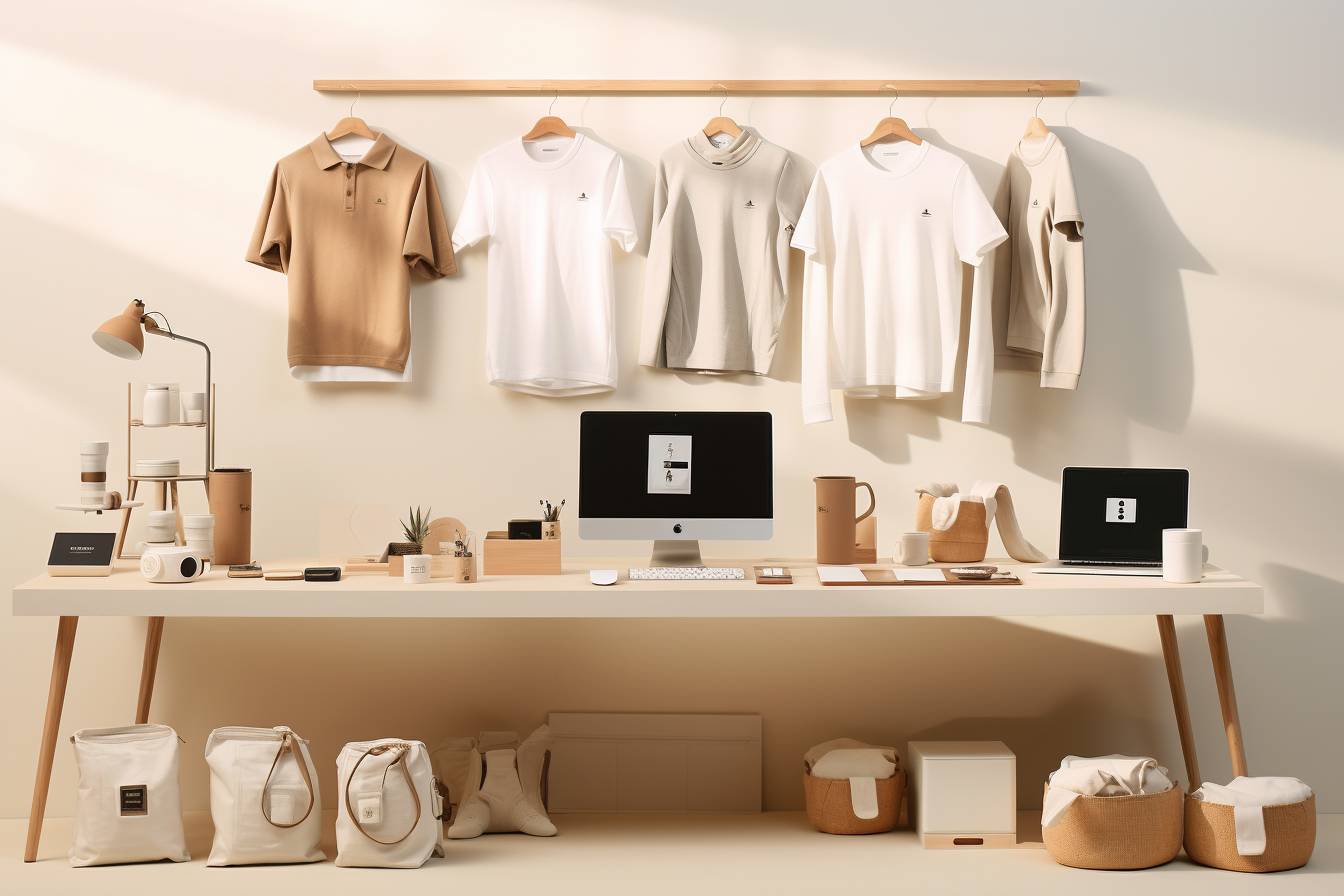

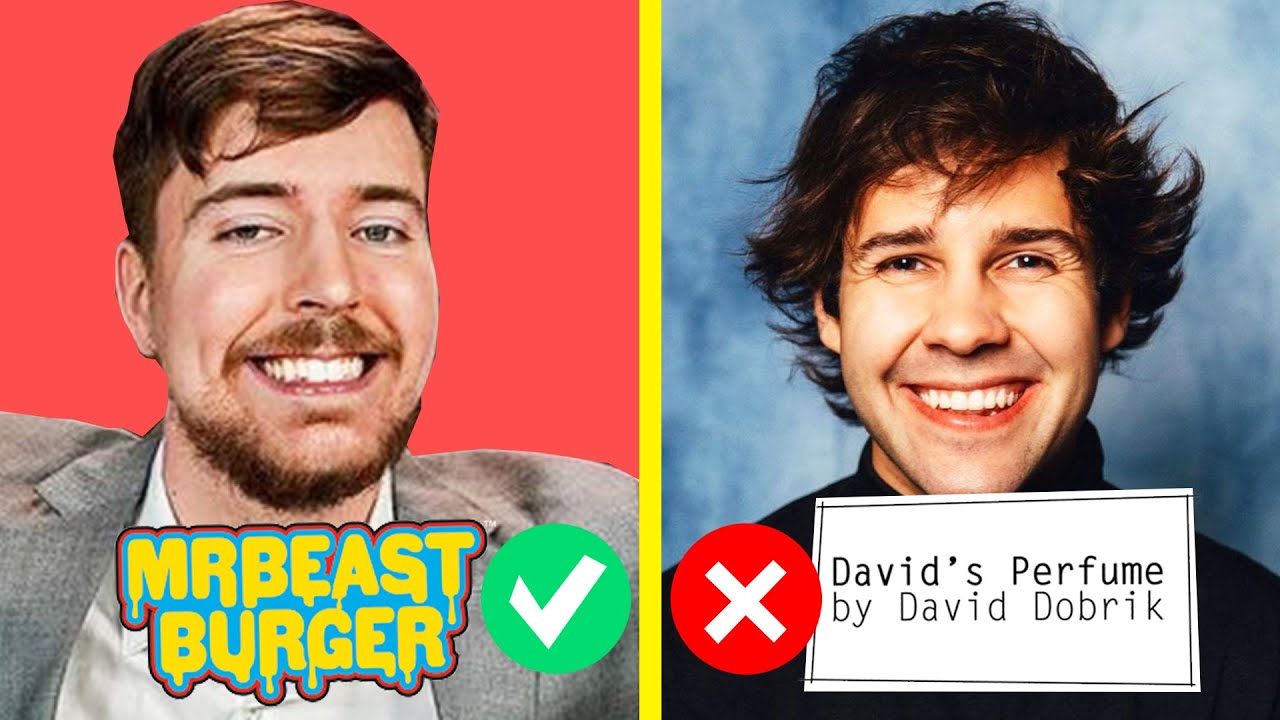 Colin and Samir
Colin and Samir
Accessories and Lifestyle Products
Overview
Creating a brand and merchandise related to your YouTube channel allows creators to diversify their income streams, build a more significant presence, and establish a more personal connection with their audience. In this section, we will discuss the different types of accessories and lifestyle products popular among YouTubers and their fans.
Common Types of Accessories and Lifestyle Products
- Apparel: T-shirts, hoodies, and hats are classic merchandise items, often featuring a creator's logo or catchphrase.
- Phone cases: Custom phone cases with a creator's design can be a popular choice.
- Jewelry: Bracelets, necklaces, or rings with branded symbols or text can be a unique way for fans to show their support.
- Bags: Backpacks, tote bags, or pouches featuring a creator's design.
- Stationery: Notebooks, planners, and stickers can be simple yet effective merch items.
- Home décor: Items such as posters, mugs, or pillows can provide opportunities for fans to display their support in their living spaces.
- Beauty products: Makeup, skincare, or other beauty-related items can be a great option for creators focusing on the beauty niche.
- Collaborations: Collaborating with established brands to create limited-edition products can be a mutually beneficial opportunity for YouTubers and the brands involved.
Do's:
- Do create unique, high-quality products that reflect your brand and content.
- Do make sure your products comply with YouTube's guidelines on merchandise.
- Do adequately market your products, either by mentioning them in your videos, posting on social media, or creating dedicated content showcasing the items.
- Do consider partnering with an established platform that can help with the production, shipping, and customer service aspects of your merchandise.
Don'ts:
- Don't create low-quality or generic products that do not add value to your brand.
- Don't excessively promote your merchandise, as it may annoy or alienate your audience.
- Don't copy other creators' merchandise ideas or designs without permission. Be aware of copyright laws and the importance of protecting your intellectual property.
- PewDiePie: Felix Kjellberg, better known as PewDiePie, has a range of apparel, accessories, and collaborations with various companies.
- Emma Chamberlain: Emma's High Key product line includes coffee, clothing, and a custom-designed planner.
- James Charles: The beauty guru's Sisters Apparel brand offers hoodies, T-shirts, joggers, and, of course, makeup products.
- David Dobrik: David's Clickbait merch line includes beanies, shirts, hoodies, and even a custom lighter.
By carefully selecting and designing accessories and lifestyle products that resonate with their audience and connect to their overall brand, these creators have successfully expanded their revenue streams, strengthened their brand, and established a deeper connection with their viewers. Following their guidelines can help you create successful and profitable merchandise for your own YouTube channel.
Further reading: How to make YouTube videos
Types of YouTube Merchandise and Creator Brands
Apparel and Clothing
Statistics and Growth
-
According to Statista, global merchandising revenue generated from YouTube amounted to $2.09 billion in 2021, a significant increase from 2020's $1.65 billion (source.
-
The highest income-earning merchandise items for YouTubers are often apparel and clothing items such as t-shirts, hoodies, hats, socks, and accessories like pins and patches (source.
Types of Apparel and Clothing Merchandise
-
T-shirts: The most common type of YouTube merch is the t-shirt, which is relatively inexpensive to produce and has broad appeal. Custom designs often feature the creator's logo, a popular catchphrase, or artwork relevant to the channel content.
-
Hoodies: Hoodies have become a popular YouTube merch item due to their versatility and the ability to incorporate more unique designs and patterns.
-
Hats and accessories: Branded hats, beanies, and caps are great ways to diversify merch offerings. Accessories like pins and patches are easy to produce and appeal to a wide audience.
-
Specialty items: These can range from unique clothing items, such as leggings or sweatpants, to customized clothing products made specifically for the creator's audience.
-
Do: Create designs that resonate with your audience, and make sure they represent your brand and content well. For inspiration on creating content for YouTube, visit our guide on how to make YouTube videos.
-
Don't: Sacrifice quality for lower production costs. High-quality products will lead to higher customer satisfaction and encourage repeat purchases.
-
Do: Stay updated on popular design trends within your niche to remain relevant and appealing to your audience. For instance, draw inspiration from other creators within your niche.
-
Don't: Overwhelm your customers with too many options. Focus on a few core merchandise items and build your offering gradually to avoid stretching your resources and confusing your audience.
As a YouTube creator, incorporating apparel and clothing merchandise within your monetization strategy can provide a valuable revenue stream and build brand loyalty among your audience. By understanding your viewer demographics, creating appealing designs, and following best practices, you can establish a successful creator brand in the YouTube space.
Stay informed about the latest YouTube news and resources by signing up for YouTube newsletters and explore other tools available to creators to enhance your YouTube presence.
Collaborations and Limited Editions
Overview
Collaborations and limited edition merchandise offer exciting opportunities for YouTube creators to increase their brand exposure, boost sales, and engage with their audience and fellow creators. These collaborations can help creators reach new demographics and cross-promote their content to a larger audience.
Successful Collaborations
- Shane Dawson x Jeffree Star - This collaboration resulted in the creation of the highly-anticipated Conspiracy makeup palette and a range of merchandise that sold out within minutes.
- PewDiePie x Dbrand - The famous YouTuber partnered with Dbrand for a limited edition run of exclusive phone cases and skins.
- Rhett & Link x DFTBA - The popular duo collaborated with DFTBA to release a limited edition merch collection, including clothing and accessories.
Limited Edition Merchandise
- Holiday collections - Creators can release exclusive merchandise for specific holidays or seasons (e.g., Halloween, Christmas, summertime).
- Anniversary merchandise - Celebrate milestones like channel anniversaries with limited edition collections.
- Event-specific merch - Design merchandise related to a specific event (e.g., a live show, special video, or collaboration).
- Do collaborate with like-minded creators whose audience aligns with yours.
- Do prioritize quality over quantity when creating limited edition merchandise.
- Do promote your collaborations and limited edition products extensively on social media and your YouTube channel.
- Do consider creating customized packaging for your limited edition products to enhance the exclusivity and desirability of the items.
- Don't focus solely on short-term profit. Aim for lasting partnerships that will benefit all parties involved.
- Don't create limited edition items that differ drastically from your usual branding, as this may alienate your core fan base.
Collaborating Effectively for Success
To ensure the success of collaborations and limited edition merchandise, it's crucial to:
- Set clear goals - Determine what you want to achieve from the collaboration, whether it's increased exposure, sales, or networking.
- Communicate openly and honestly with your collaborator(s). Regular communication and shared expectations will help maintain a strong partnership.
- Plan a marketing strategy together to promote the collaboration and/or merchandise. Cross-promote on each other's channels, create anticipation through teasers, or do a launch event.
- Evaluate the success of your collaboration and learn from it to make future partnerships even more effective.
For more tips on collaborations, check out our guide on YouTube collabs and networking.
By following these guidelines and leveraging the power of collaborations and limited edition merchandise, YouTube creators can expand their brand, increase revenue, and forge fruitful connections with fellow creators.
Types of YouTube Merchandise and Creator Brands
Digital Products and Services
- Online Courses: Many creators offer educational content or how-to guides in the form of online courses, as seen with how to make YouTube videos by popular creators.
- E-books: Some YouTubers, especially those focusing on educational or lifestyle content, have written e-books to share their knowledge and experiences.
- Mobile Apps: Creators with programming and design skills develop mobile apps related to their channel content or as a tool to engage and communicate with their audience.
- Subscription-based content: Platforms like Patreon enable creators to offer exclusive content to their subscribers, such as behind-the-scenes videos, early access to content, or personalized shoutouts.
In addition, a survey from Patreon reveals that 93% of creators earn more income from their digital product sales than ad revenue alone, emphasizing the necessity for creators to have diverse revenue streams.
Do's:
- Identify a niche or domain where your expertise lies and develop digital products or services within that realm.
- Research your audience's interests and pain points to align your digital products and services accordingly.
- Promote and market your digital products and services by leveraging your presence on YouTube and other social media platforms.
- Seek feedback from your audience and consistently update or improve your offerings.
- Ensure you adhere to YouTube copyright strike policies and intellectual property laws.
Don'ts:
- Don't focus solely on ad revenue; diversify your income streams with digital products and services.
- Avoid offering products or services that aren't relevant to your audience or your channel's niche.
- Don't charge exorbitantly for your digital products, as this might discourage potential buyers.
Table: Top Digital Platforms for Monetizing Content
| Platform | Description | Types of Digital Products |
|---|---|---|
| Patreon | Allows creators to receive monthly financial support | Exclusive videos, early access, shoutouts |
| Gumroad | Marketplace for creators to sell digital products | E-books, courses, digital downloads |
| Teachable | Online course creation platform | Online courses, workshops |
| Shopify | E-commerce platform for selling physical and digital products | Digital downloads, printables |
Chart: Digital Product Revenue Growth (2020-2025) From $87 billion in 2020 to an estimated $100 billion by 2025. Growth % per year: 3-5%
By utilizing digital products and services, YouTube creators can diversify their revenue streams, cater to their audience's needs, and strengthen their personal brands. Creators should always strive to improve their offerings, taking into account audience feedback and trends in the digital market.
YouTube Merchandise and Creator Brands
- An Overview of Merchandise and Creator Brands
- Key Statistics
- Effective Marketing Techniques
- Diversification of Income

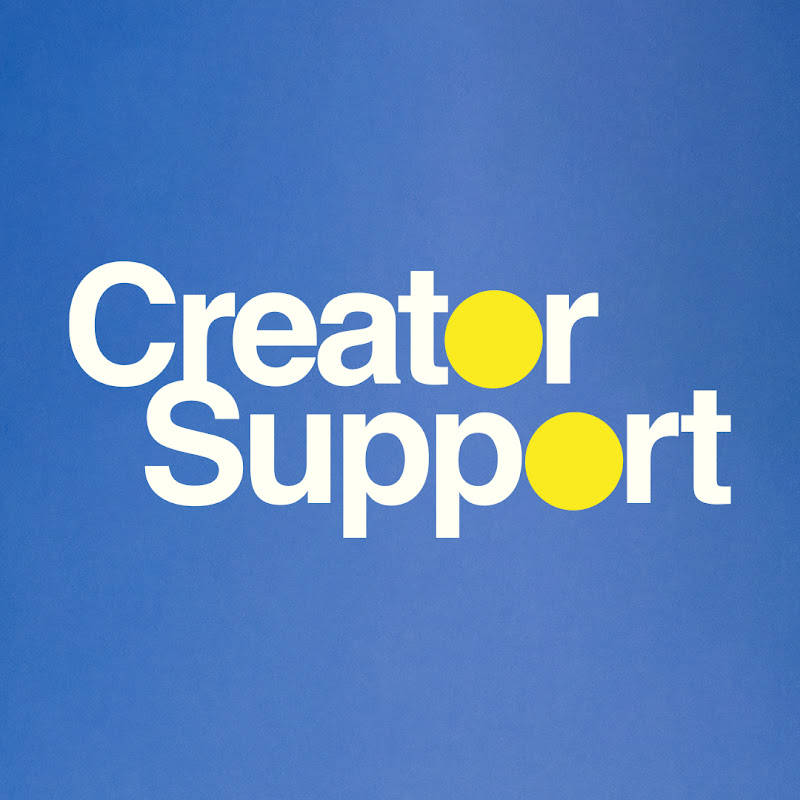
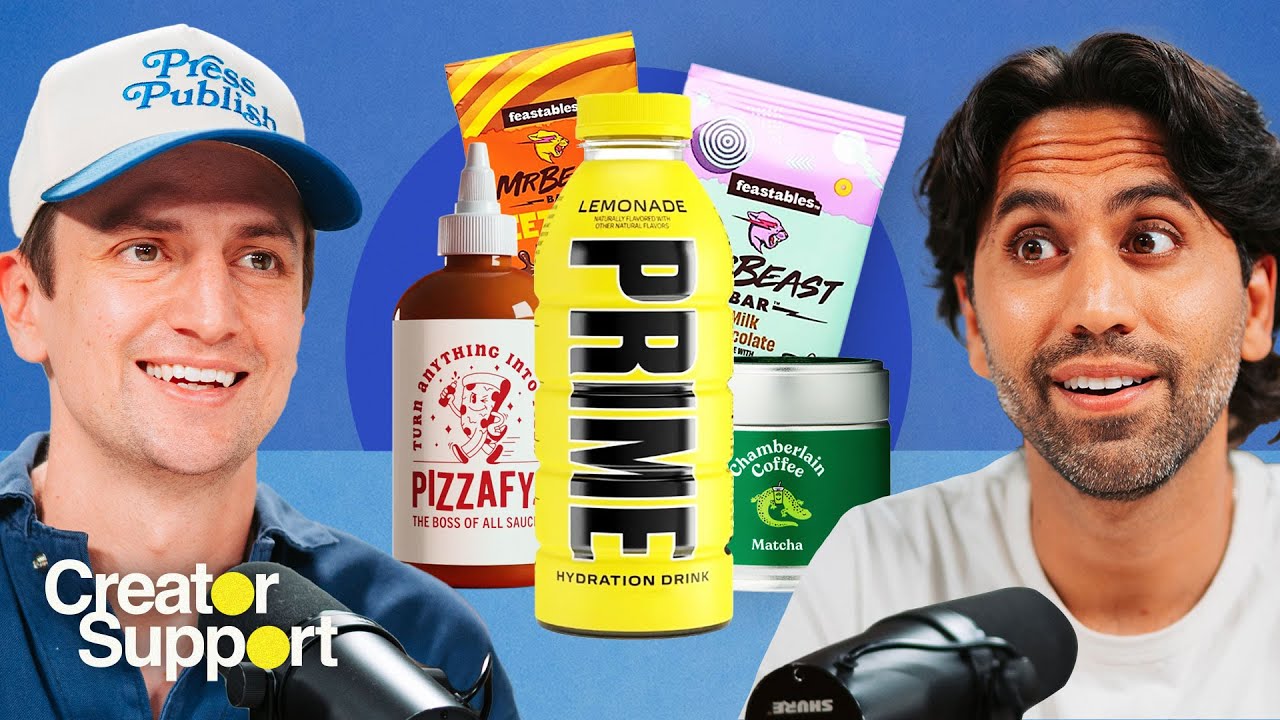 Creator Support
Creator Support
YouTube Merchandise and Creator Brands
An Overview of Merchandise and Creator Brands
- According to a recent study, 19% of the top 1000 YouTube channels use merchandise to monetize their channels .
- The same study found that channels with over 10 million subscribers are five times more likely to sell merchandise than those with 1-10 million subscribers.
- In 2020, popular YouTuber Logan Paul's merchandise brought in a reported $40 million .
- Smosh: Their successful clothing line called Smosh Clothing offers a variety of merchandise, including T-shirts, hoodies, and hats.
- PewDiePie: The popular YouTuber's merchandise selection includes clothing, accessories, and even plushies.
- James Charles: Known for his makeup tutorials, James Charles launched his own makeup line called 'Morphe X James Charles.'
Do's:
- Maintain brand consistency: design merchandise that aligns with your channel's branding and messaging.
- Offer a variety of products that cater to different tastes and budgets.
- Collaborate with reputable merchandising partners to ensure the quality of products and fulfillment services.
Don'ts:
- Avoid cheap or low-quality products that can hurt your reputation.
- Don't constantly push your merchandise in every single video; be strategic about how and when you promote your merchandise.
- Don't rely solely on one platform to sell your products; experiment with different sales channels and marketing strategies.
Platforms for Selling Merchandise
- Teespring, Teepublic, and Redbubble: Online platforms that let you create and sell custom merchandise without holding inventory or handling shipping.
- Shopify: A widely used eCommerce platform that lets you create an online store for your merchandise.
- Amazon Merch: A print-on-demand service from Amazon, where you upload your designs and Amazon handles printing, shipping, and customer service.
To grow your YouTube channel and learn best practices, consider subscribing to YouTube newsletters. In addition, consider checking out online courses and educational resources on making YouTube videos.
Importance of Merchandise and Creator Brands in Monetization
As a YouTube creator, expanding your revenue streams beyond ad revenue is essential for achieving financial success and stability. One of the crucial components of monetization is the sale of merchandise and the development of your creator brand. This section will explore the importance of merchandise and creator brands in a creator's monetization strategy.
Key Statistics
- According to a MerchDope study, 40% of YouTube users surveyed claimed that purchasing merchandise would make them feel closer to their favorite creators.
- Teespring, a popular merchandise platform, reported that successful creators on their platform can earn up to $100,000 per month in additional revenue.
- YouTube's own report stated that channels with merch shelf integration saw a 25% increase in their merchandise revenue.
- PewDiePie: By offering branded clothing and accessories, PewDiePie has established his creator brand and significantly increased his earnings outside of ad revenue.
- David Dobrik: Known for his 'Clickbait' merchandise line, David Dobrik has effectively monetized his creator brand, selling various clothing items, phone cases, and more.
Do's
- Collaborate with a reliable merchandise partner to ensure high quality products and efficient shipping.
- Stay consistent with your branding and use recognizable logos, fonts, and colors.
- Promote your merchandise in your videos and across your social media platforms.
- Offer time-limited or exclusive items to create a sense of urgency and excitement among your fans.
Don'ts
- Overprice your products, as it can deter potential buyers.
- Neglect your core content in favor of excessive merchandise promotion.
- Create low-quality merchandise or items unrelated to your channel and brand.
Effective Marketing Techniques
- Limited edition launches: Release exclusive items for a limited time to create hype and increase demand.
- Giveaways and contests: Engage your audience and promote your merchandise by hosting giveaways or contests.
- Fan-created designs: Encourage your fans to submit their designs or ideas for merchandise, fostering a sense of community while promoting your products.
Diversification of Income
Merchandise revenue combined with other monetization methods such as YouTube Channel Memberships, sponsorships, and affiliate marketing can help creators achieve financial stability and minimize reliance on ad revenue.
Looking for Brand Deals or Channel Strategy?
We run a platform for brand deals and an agency, helping creators derive maximum value from their content, while offering brands access to unparalleled, best-in-class research.
For Creators
- Strategic Brand Connections
- Outreach to Old Sponsors
- Platform to Manage Brand Deals
- View-Based Contract Negotiation
- Comprehensive Channel Strategy
- Channel/Thumbnail Optimization
For Brands
- Tools to Shortlist Creators
- Targeted Creator Outreach
- Detailed Sponsorship Reports on Existing Brands
- Platform to Manage Creator Deals
- View-Based Deal Facilitation
For Creators
- Strategic Brand Connections
- Outreach to Old Sponsors
- Platform to Manage Brand Deals
- View-Based Contract Negotiation
- Comprehensive Channel Strategy
- Channel/Thumbnail Optimization
For Brands
- Tools to Shortlist Creators
- Targeted Creator Outreach
- Detailed Sponsorship Reports on Existing Brands
- Platform to Manage Creator Deals
- View-Based Deal Facilitation
Apply to work with us or email [email protected]

Table of Contents
Work with us